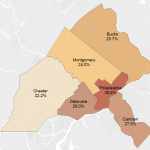Exam #1 – Monday, Feb 16
- Monday, Feb. 16th, 2015. 9:00 – 9:45 AM
- 30 multiple choice questions
- 45 minutes
- Closed books, closed notes, and closed laptops
- Don’t forget to hand in both your exam and answer sheet.
- Will be two types of exam (A & B) – Mark your exam type on your answer sheet.
- Read all class slides, in-class exercises, and reading assignments.
- Watch all videos.
- Review the Tableau in-class exercise (Day 9 – 11) and take a look at the solution as well.
Best Submissions for Assignment #1
Grading of Assignment #1 completed
Reading Assignment for Day 13 (Feb 11)
Cool Inforgraphic – Effective Communication with Data Visualization (Chapter 1, Temple ID and password required.)
In-Class Exercise on Wed, Feb 11 – Creating Infographics with Piktochart
Online discussion questions – Day 12 (Feb 9) – Communicating Data
- Can you find examples of good data visualization on the Web that communicate the key messages well? Why is it effective?
- How would you improve any data visualization of federal student loan data that we looked at the class today?
In-Class Exercise on Mon, Feb 9 – Telling a Story through Visualization
Reading Assignment for Day 12 (Feb 9)
Telling a Story with Data – Deloitte Review (http://dupress.com/articles/telling-a-story-with-data/)
Data is Worthless if You Don’t Communicate It – HBR (a shorter version of the above one, https://hbr.org/2013/06/data-is-worthless-if-you-dont)
Nightingale’s Coxcombs – Understanding Uncertainty (http://understandinguncertainty.org/coxcombs)
Day 12 – Communicating Data – class slides
“Metadata Can Expose Person’s Identity Even Without Name” – WSJ
“Metadata Can Expose Person’s Identity Even Without Name”
New Analytic Formula Identifies People Without Names, Account Numbers –WSJ Jan.29,2015
http://www.wsj.com/articles/metadata-can-expose-persons-identity-even-when-name-isnt-1422558349
According to this article “Your shopping habits can expose who you are even when you are just one of a million nameless customers in a database of anonymous credit-card records, according to a new study that shows how so-called metadata can be used to circumvent privacy protections in commercial and government databases” MIT explains that by using metadata and a new analytic formula that formulates patterns based on the data collected on the millions of shoppers…with the formula each transaction was time-stamped with the day of purchase and linked to a shop. Even with so little to go on, they could readily identify a person’s unique purchasing pattern. Once the person’s shopping habit where identified they where able to match their activity levels with that of their public online accounts such as Facebook, Twitter, & Linkedin that actually contained time and location of their location “check-in” apps.
“We think of metadata as being not as important as content, but it turns out to be remarkably revelatory,” said cybersecurity analyst Susan Landau at Worcester Polytechnic Institute in Massachusetts, who wasn’t involved in the project. “Little bits of data combined with the data we shed in other places really create portraits.”
introduced by Jimena Vazquez



Recent Comments